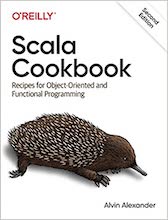|
|
Java example source code file (UniformCrossoverTest.java)
This example Java source code file (UniformCrossoverTest.java) is included in the alvinalexander.com
"Java Source Code
Warehouse" project. The intent of this project is to help you "Learn
Java by Example" TM.
Learn more about this Java project at its project page.
The UniformCrossoverTest.java Java example source code
/*
* Licensed to the Apache Software Foundation (ASF) under one or more
* contributor license agreements. See the NOTICE file distributed with
* this work for additional information regarding copyright ownership.
* The ASF licenses this file to You under the Apache License, Version 2.0
* (the "License"); you may not use this file except in compliance with
* the License. You may obtain a copy of the License at
*
* http://www.apache.org/licenses/LICENSE-2.0
*
* Unless required by applicable law or agreed to in writing, software
* distributed under the License is distributed on an "AS IS" BASIS,
* WITHOUT WARRANTIES OR CONDITIONS OF ANY KIND, either express or implied.
* See the License for the specific language governing permissions and
* limitations under the License.
*/
package org.apache.commons.math3.genetics;
import java.util.ArrayList;
import java.util.List;
import org.junit.Assert;
import org.apache.commons.math3.exception.DimensionMismatchException;
import org.apache.commons.math3.exception.MathIllegalArgumentException;
import org.apache.commons.math3.exception.OutOfRangeException;
import org.junit.BeforeClass;
import org.junit.Test;
public class UniformCrossoverTest {
private static final int LEN = 10000;
private static final List<Integer> p1 = new ArrayList(LEN);
private static final List<Integer> p2 = new ArrayList(LEN);
@SuppressWarnings("boxing")
@BeforeClass
public static void setUpBeforeClass() {
for (int i = 0; i < LEN; i++) {
p1.add(0);
p2.add(1);
}
}
@Test(expected = OutOfRangeException.class)
public void testRatioTooLow() {
new UniformCrossover<Integer>(-0.5d);
}
@Test(expected = OutOfRangeException.class)
public void testRatioTooHigh() {
new UniformCrossover<Integer>(1.5d);
}
@Test
public void testCrossover() {
// test crossover with different ratios
performCrossover(0.5);
performCrossover(0.7);
performCrossover(0.2);
}
private void performCrossover(double ratio) {
final DummyBinaryChromosome p1c = new DummyBinaryChromosome(p1);
final DummyBinaryChromosome p2c = new DummyBinaryChromosome(p2);
final CrossoverPolicy cp = new UniformCrossover<Integer>(ratio);
// make a number of rounds
for (int i = 0; i < 20; i++) {
final ChromosomePair pair = cp.crossover(p1c, p2c);
final List<Integer> c1 = ((DummyBinaryChromosome) pair.getFirst()).getRepresentation();
final List<Integer> c2 = ((DummyBinaryChromosome) pair.getSecond()).getRepresentation();
int from1 = 0;
int from2 = 0;
// check first child
for (int val : c1) {
if (val == 0) {
from1++;
} else {
from2++;
}
}
Assert.assertEquals(1.0 - ratio, (double) from1 / LEN, 0.1);
Assert.assertEquals(ratio, (double) from2 / LEN, 0.1);
from1 = 0;
from2 = 0;
// check second child
for (int val : c2) {
if (val == 0) {
from1++;
} else {
from2++;
}
}
Assert.assertEquals(ratio, (double) from1 / LEN, 0.1);
Assert.assertEquals(1.0 - ratio, (double) from2 / LEN, 0.1);
}
}
@Test(expected = DimensionMismatchException.class)
public void testCrossoverDimensionMismatchException(){
@SuppressWarnings("boxing")
final Integer[] p1 = new Integer[] {1,0,1,0,0,1,0,1,1};
@SuppressWarnings("boxing")
final Integer[] p2 = new Integer[] {0,1,1,0,1};
final BinaryChromosome p1c = new DummyBinaryChromosome(p1);
final BinaryChromosome p2c = new DummyBinaryChromosome(p2);
final CrossoverPolicy cp = new UniformCrossover<Integer>(0.5d);
cp.crossover(p1c, p2c);
}
@Test(expected = MathIllegalArgumentException.class)
public void testCrossoverInvalidFixedLengthChromosomeFirst() {
@SuppressWarnings("boxing")
final Integer[] p1 = new Integer[] {1,0,1,0,0,1,0,1,1};
final BinaryChromosome p1c = new DummyBinaryChromosome(p1);
final Chromosome p2c = new Chromosome() {
public double fitness() {
// Not important
return 0;
}
};
final CrossoverPolicy cp = new UniformCrossover<Integer>(0.5d);
cp.crossover(p1c, p2c);
}
@Test(expected = MathIllegalArgumentException.class)
public void testCrossoverInvalidFixedLengthChromosomeSecond() {
@SuppressWarnings("boxing")
final Integer[] p1 = new Integer[] {1,0,1,0,0,1,0,1,1};
final BinaryChromosome p2c = new DummyBinaryChromosome(p1);
final Chromosome p1c = new Chromosome() {
public double fitness() {
// Not important
return 0;
}
};
final CrossoverPolicy cp = new UniformCrossover<Integer>(0.5d);
cp.crossover(p1c, p2c);
}
}
Other Java examples (source code examples)
Here is a short list of links related to this Java UniformCrossoverTest.java source code file:
|
 The search page
The search page Other Java source code examples at this package level
Other Java source code examples at this package level Click here to learn more about this project
Click here to learn more about this project
